1. Eyal S, Rubin S, Krief S, Levin L, Zelzer E. 2019; Common cellular origin and diverging developmental programs for different sesamoid bones. Development. 146:dev167452. DOI:
10.1242/dev.167452. PMID:
30745426. PMCID:
PMC6919532.

2. Seguritan RE, Wolfe AR, Mena P, Bibawy J, Bianchi C, Solomon N, Kikkeri V. 2018; Bipartite patella separation and partial quadriceps tendon rupture in the setting of trauma. Radiol Case Rep. 14:526–9. DOI:
10.1016/j.radcr.2018.10.003. PMID:
30906491. PMCID:
PMC6412164.

4. Zabierek S, Zabierek J, Kwapisz A, Domzalski ME. 2016; Bipartite patella in 35-year-old fitness instructor: a case report. Int J Sports Phys Ther. 11:777–83. PMID:
27757290. PMCID:
PMC5046971.
5. Gruber W. 1883; In Bildungsanomalie mit Bildungshemmung begründete Bipartition beider Patellae eines jungen Subjectes. Arch Pathol Anat. 94:358–361. German. DOI:
10.1007/BF01916049.
6. Saupe E. 1921; Beitrag zur Patella bipartite. Fortschr Rontgenstr. 28:37–41.
7. Oohashi Y, Koshino T, Oohashi Y. 2010; Clinical features and classification of bipartite or tripartite patella. Knee Surg Sports Traumatol Arthrosc. 18:1465–9. DOI:
10.1007/s00167-010-1047-y. PMID:
20111951.

8. Perdikakis E, Pothitakis C. 2013; Symptomatic multipartite patella: imaging findings and pain relief. A description of two cases. Cent Eur J Med. 8:172–175. DOI:
10.2478/s11536-012-0126-5.

9. Omar IM, Schweitzer M. 2004; Bipartite patella: MR imaging characteristics and frequency. Proc Intl Soc Mag Reson Med. 11:804.
11. Friedman AC, Naidich TP. 1978; The fabella sign: fabella displacement in synovial effusion and popliteal fossa masses. Normal and abnormal fabello-femoral and fabello-tibial distances. Radiology. 127:113–21. DOI:
10.1148/127.1.113. PMID:
635171.
12. Minowa T, Murakami G, Kura H, Suzuki D, Han SH, Yamashita T. 2004; Does the fabella contribute to the reinforcement of the posterolateral corner of the knee by inducing the development of associated ligaments? J Orthop Sci. 9:59–65. DOI:
10.1007/s00776-003-0739-2. PMID:
14767706.

13. Hauser NH, Hoechel S, Toranelli M, Klaws J, Müller-Gerbl M. 2015; Functional and structural details about the fabella: what the important stabilizer looks like in the central European population. Biomed Res Int. 2015:343728. DOI:
10.1155/2015/343728. PMID:
26413516. PMCID:
PMC4564579.

14. Chew CP, Lee KH, Koh JS, Howe TS. 2014; Incidence and radiological characteristics of fabellae in an Asian population. Singapore Med J. 55:198–201. DOI:
10.11622/smedj.2014052. PMID:
24763835. PMCID:
PMC4291947.

15. Franceschi F, Longo UG, Ruzzini L, Leonardi F, Rojas M, Gualdi G, Denaro V. 2007; Dislocation of an enlarged fabella as uncommon cause of knee pain: a case report. Knee. 14:330–2. DOI:
10.1016/j.knee.2007.03.007. PMID:
17490883.
17. Heideman GM, Baynes KE, Mautz AP, DuBois MS, Roberts JW. 2011; Fabella fracture with CT imaging: a case report. Emerg Radiol. 18:357–61. DOI:
10.1007/s10140-011-0941-z. PMID:
21305331.

18. Theodorou SJ, Theodorou DJ, Resnick D. 2005; Painful stress fractures of the fabella in patients with total knee arthroplasty. AJR Am J Roentgenol. 185:1141–4. DOI:
10.2214/AJR.04.1230. PMID:
16247123.

19. Driessen A, Balke M, Offerhaus C, White WJ, Shafizadeh S, Becher C, Bouillon B, Höher J. 2014; The fabella syndrome- a rare cause of posterolateral knee pain: a review of the literature and two case reports. BMC Musculoskelet Disord. 15:100. DOI:
10.1186/1471-2474-15-100. PMID:
24666711. PMCID:
PMC3987160.

20. Phukubye P, Oyedele O. 2011; The incidence and structure of the fabella in a South African cadaver sample. Clin Anat. 24:84–90. DOI:
10.1002/ca.21049. PMID:
20830786.

22. Takebe K, Kita K, Hirohata K. 1983; Radiological and anatomical observation on fabella. Orthop Surg. 34:1163–70.
24. Yu JS, Salonen DC, Hodler J, Haghighi P, Trudell D, Resnick D. 1996; Posterolateral aspect of the knee: improved MR imaging with a coronal oblique technique. Radiology. 198:199–204. DOI:
10.1148/radiology.198.1.8539378. PMID:
8539378.

25. Egerci OF, Kose O, Turan A, Kilicaslan OF, Sekerci R, Keles-Celik N. 2017; Prevalence and distribution of the fabella: a radiographic study in Turkish subjects. Folia Morphol (Warsz). 76:478–83. DOI:
10.5603/FM.a2016.0080. PMID:
28026849.

27. Zhou F, Zhang F, Deng G, Bi C, Wang J, Wang Q, Wang Q. 2017; Fabella fracture with radiological imaging: a case report. Trauma Case Rep. 12:19–23. DOI:
10.1016/j.tcr.2017.10.010. PMID:
29644278. PMCID:
PMC5887092.

28. Hou W, Xu L, Wang J, Wang B, Liu L, Xu K, Cai Y, Guo H, Xu P. 2019; Fabellar prevalence, degeneration and association with knee osteoarthritis in the Chinese population. Sci Rep. 9:13046. DOI:
10.1038/s41598-019-49174-1. PMID:
31506455. PMCID:
PMC6736872.

29. Pop TS, Pop AM, Olah P, Trâmbiţaş C. 2018; Prevalence of the fabella and its association with pain in the posterolateral corner of the knee: a cross-sectional study in a Romanian population. Medicine (Baltimore). 97:e13333. DOI:
10.1097/MD.0000000000013333. PMID:
30461651. PMCID:
PMC6392660.
30. Berthaume MA, Bull AMJ. 2020; Human biological variation in sesamoid bone prevalence: the curious case of the fabella. J Anat. 236:228–42. DOI:
10.1111/joa.13091. PMID:
31623020. PMCID:
PMC6956444.

31. Zeng SX, Dong XL, Dang RS, Wu GS, Wang JF, Wang D, Huang HL, Guo XD. 2012; Anatomic study of fabella and its surrounding structures in a Chinese population. Surg Radiol Anat. 34:65–71. DOI:
10.1007/s00276-011-0828-4. PMID:
21626275.

32. Tabira Y, Saga T, Takahashi N, Watanabe K, Nakamura M, Yamaki K. 2013; Influence of a fabella in the gastrocnemius muscle on the common fibular nerve in Japanese subjects. Clin Anat. 26:893–902. DOI:
10.1002/ca.22153. PMID:
22933414.

33. Takebe K, Hirohata K. 1981; Peroneal nerve palsy due to fabella. Arch Orthop Trauma Surg. 99:91–5. DOI:
10.1007/BF00389743. PMID:
7316708.

35. Hall FM. 1978; The fabella sign and radiologic assessment of knee joint effusion. Radiology. 129:541–2. DOI:
10.1148/129.2.541a. PMID:
704877.

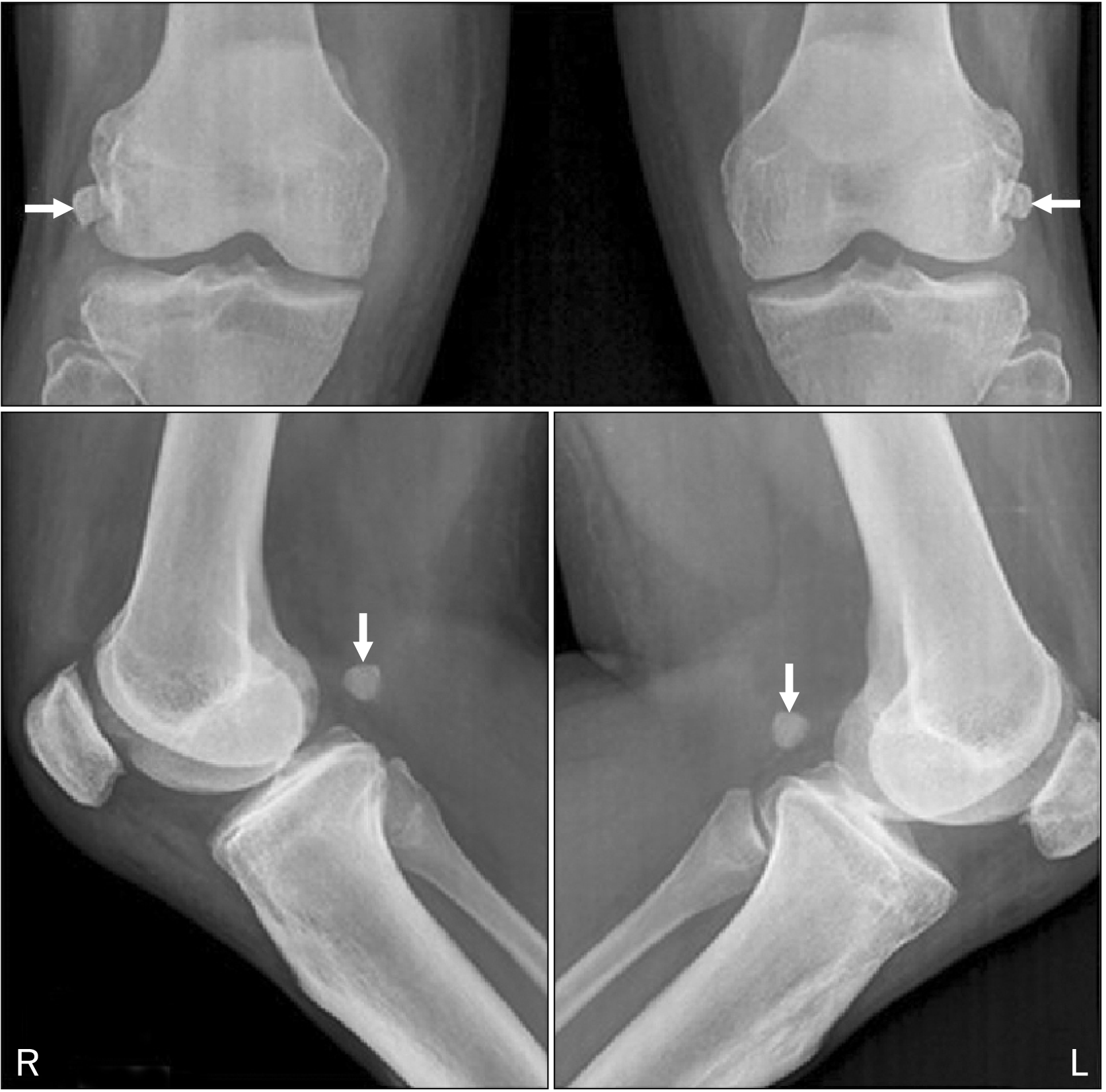
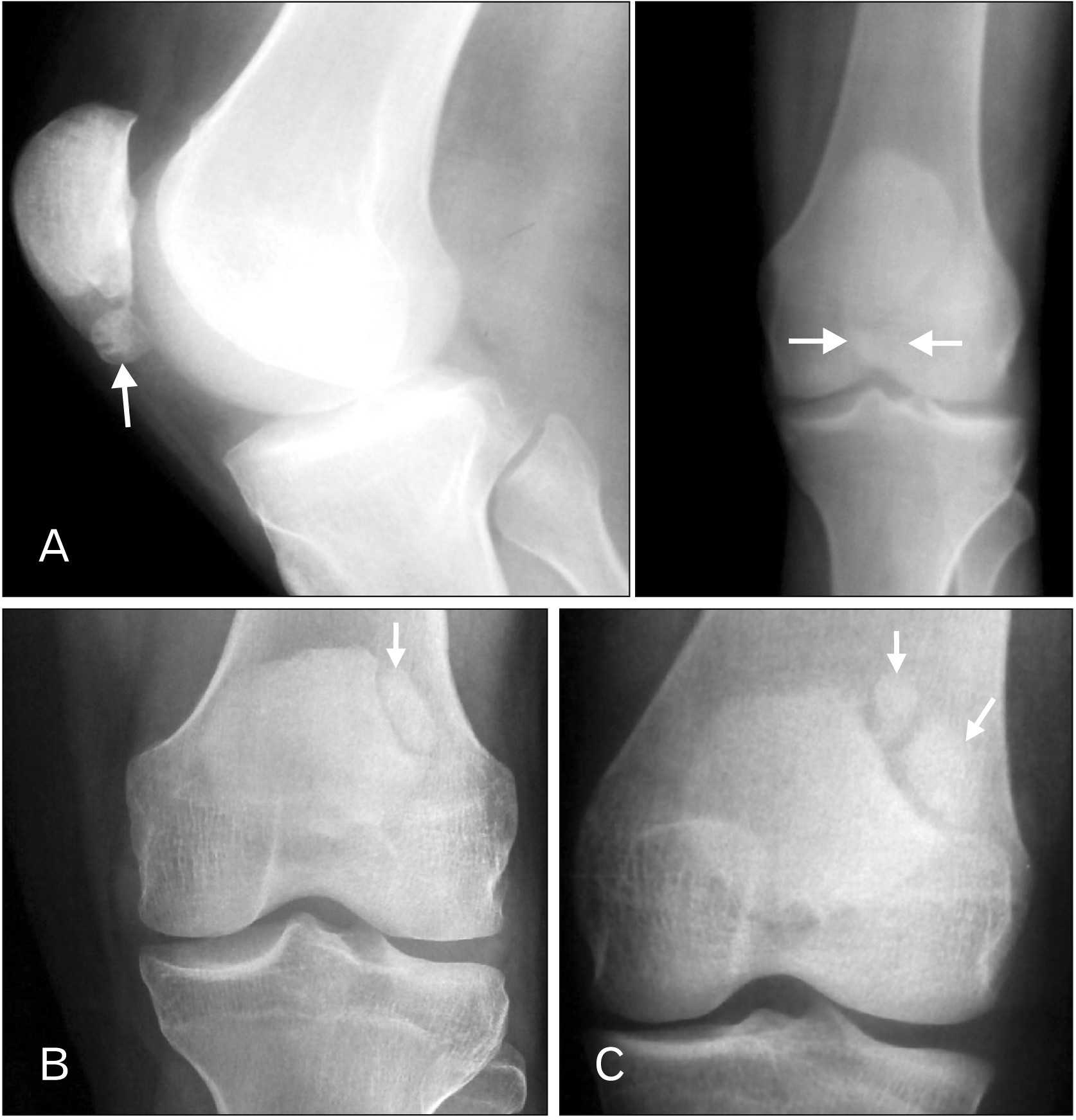




 PDF
PDF Citation
Citation Print
Print



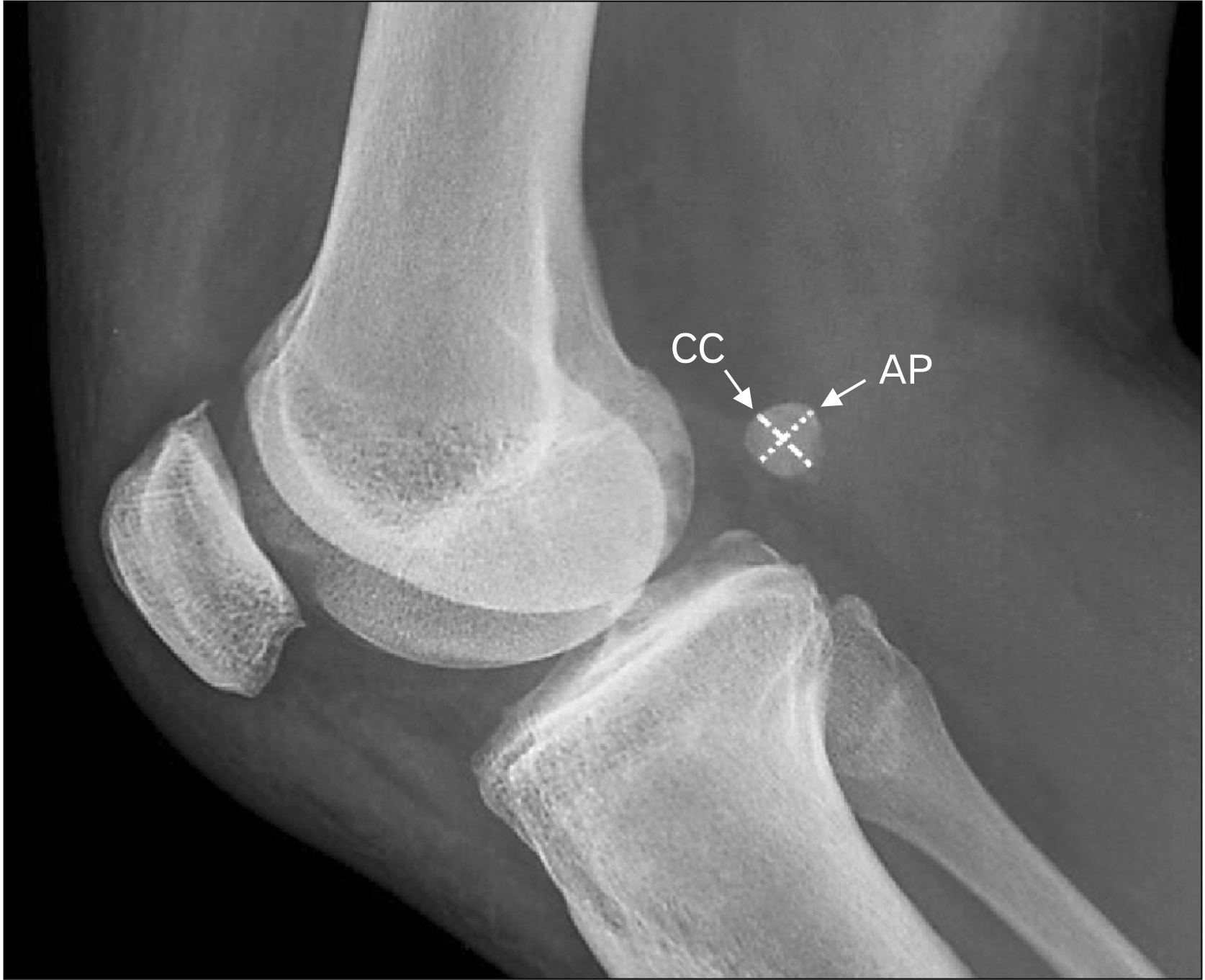
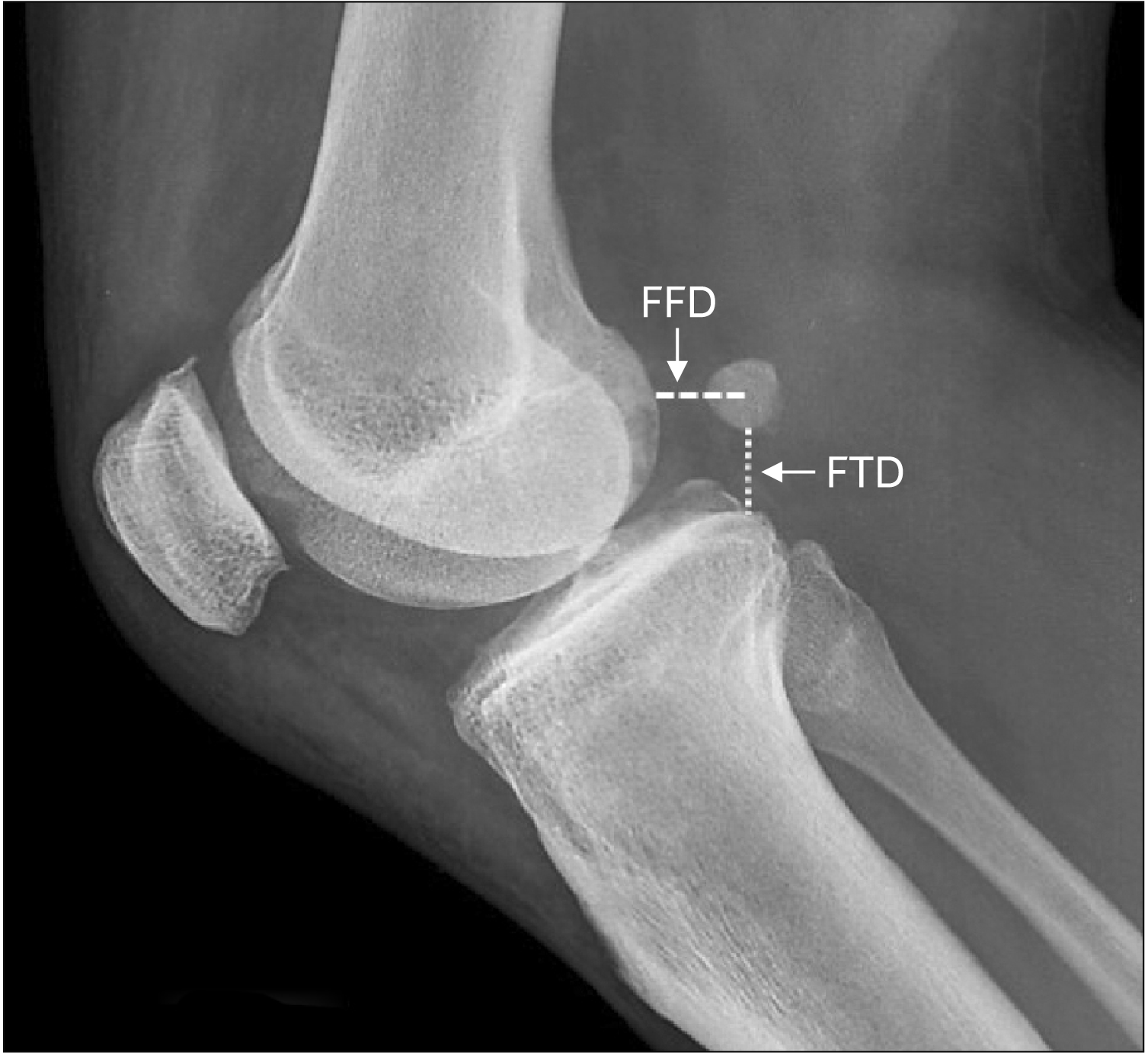
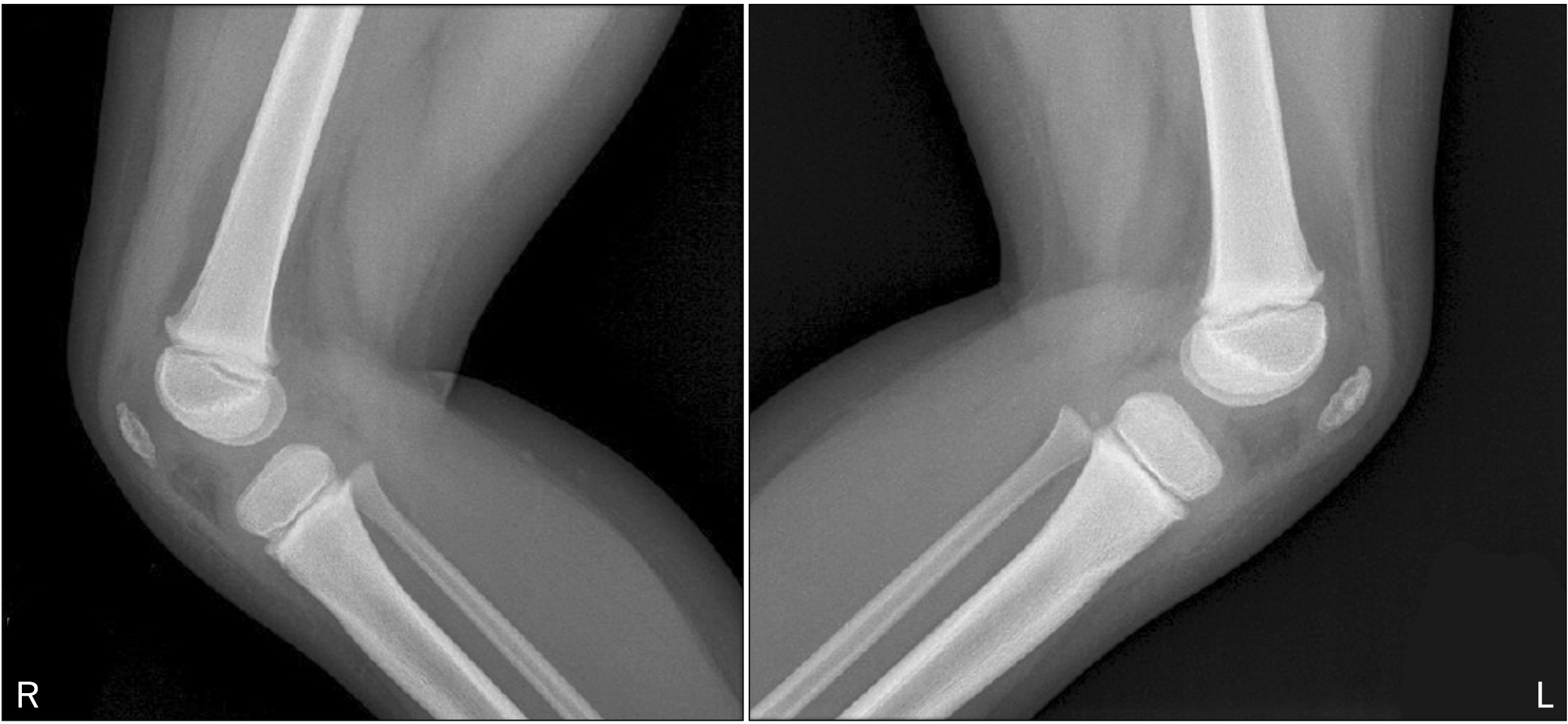
 XML Download
XML Download